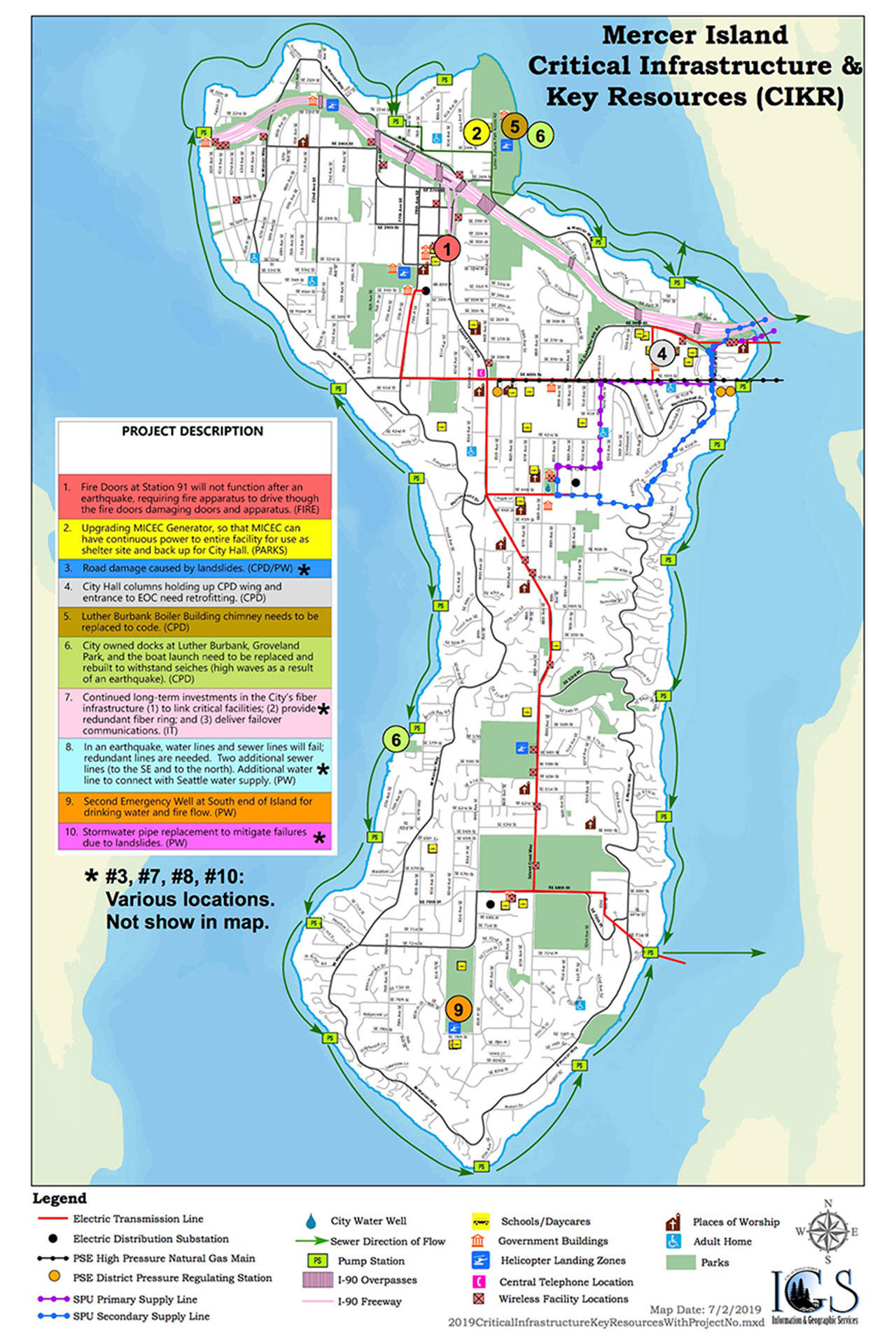It’s no secret that the “really big one” is someday going to disturb the Cascadia Subduction Zone or Seattle Fault. Until that happens, the Regional Hazard Mitigation Plan (RHMP) will be undergoing its five-year 2020 update between now and December 2019.
The RHMP covers nearly 60 planning partners, including Mercer Island. The update reassesses county vulnerabilities and develops strategies to reduce risks for potential natural hazards.
The state requires every jurisdiction to have a hazard mitigation plan, which is then updated every five years. Each of the planning partners must develop an annex to the regional plan, according to Officer Jennifer Franklin, emergency manager for Mercer Island.
In creating the annex, the city is required to have two public comment periods. The first occurred on June 22 in the form of an emergency preparedness fair.
Currently, the second chance for public opinion is through an online survey. The survey gathers public input for city staff to determine which projects should be a priority and which can wait.
Hazard mitigation is another word for disaster risk reduction. It focuses on long-term solutions and projects to address department codes or potential danger.
According to research from the National Institute of Building Sciences, hazard mitigation typically saves $6 for every $1 spent. As a result, communities throughout King County are investing in projects to increase disaster resilience.
“It’s a plan and a way to determine how you are going to reduce or limit loss of life or property damage,” Franklin said. She explained that having a plan beforehand or a thought out idea of risks will help when the actual event happens.
Mercer Island is responsible for developing its own risk-reduction strategies, which are then incorporated into the RHMP. The city has identified 10 areas that will need hazard mitigations to prepare for less damage and loss of life. One substantial update is continued long-term investments in the city’s fiber infrastructure.
In terms of fire, the doors at Station 91 need to be replaced for better functioning in the case of an earthquake. The Department of Parks and Recreation requires an upgrade for the Mercer Island Community and Event Center generator in order to use the site for shelter in the case of an emergency.
Two long-term upgrades are needed for the Department of Community Planning and Development (CPD). Road damage caused by landslides requires $15 million worth of improvements. Additionally, the city plans to use $7 million on docks at Luther Burbank, Groveland Park and the boat lunch to withstand potential seiches (high waves).
The CPD has two more projects that are expected to be completed within two years. City Hall has columns that need retrofitting and the Luther Burbank Boiler Building chimney needs to be replaced to code.
The Public Works Department requires millions of dollars for various long-term projects. In the case of an emergency where water and sewer lines fail, two additional sewer lines and one water line will be needed. A stormwater pipe replacement is also necessary to mitigate failures due to landslides.
Finally, the city intends to add a second emergency well at the south end of the island for drinking water and fire flow.
“We are very fortunate in the United States that our building codes are more up to date than in third-world countries,” Franklin said.
The complete RHMP is a requirement to receive federal hazard mitigation assistance grants. The grants pay for much of the required improvements.
“If you don’t have a plan in place, you’re liable to not get grant funding. That’s a big issue for us,” Franklin said. “It really helps for funding when we have incidents happen on the island.”
According to a landslide fact sheet from Development Services, Mercer Island likely sustains between 6 and 15 landslides in a typical year. A specific landslide costs close to $600,000 in damage, Franklin said. Since the city had a hazard mitigation plan, the damage was paid from grants.
Aside from earthquakes and landslides, other common natural hazards include severe weather, wildfire, tsunami, seiche and volcanic eruptions. Franklin said fear of an earthquake is the main concern on the island, especially since the city is located right on the Seattle Fault.
“I don’t think there is a way to completely stop any type of loss,” she said. The city should expect to see damage with sewer and water lines, as well as roads. Franklin explained that communication is usually the first to go in the case of an earthquake.
“The goal is to get people to shelter and take care of your neighborhood,” she said. “Everybody’s lives are so busy that no one wants to think about this problem.” Franklin encourages families to talk with their children and make a plan in case an event happens while they are off the island.



